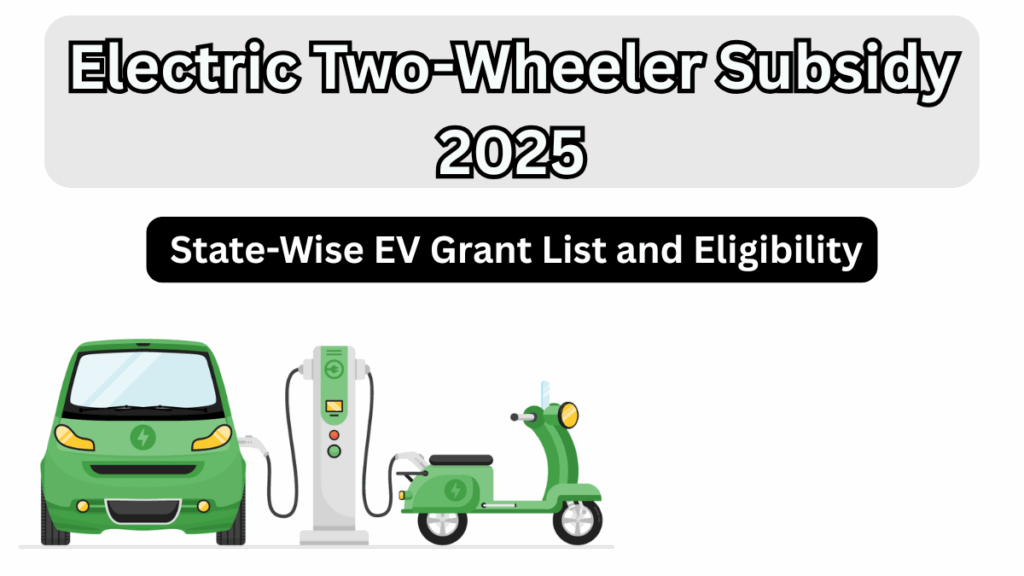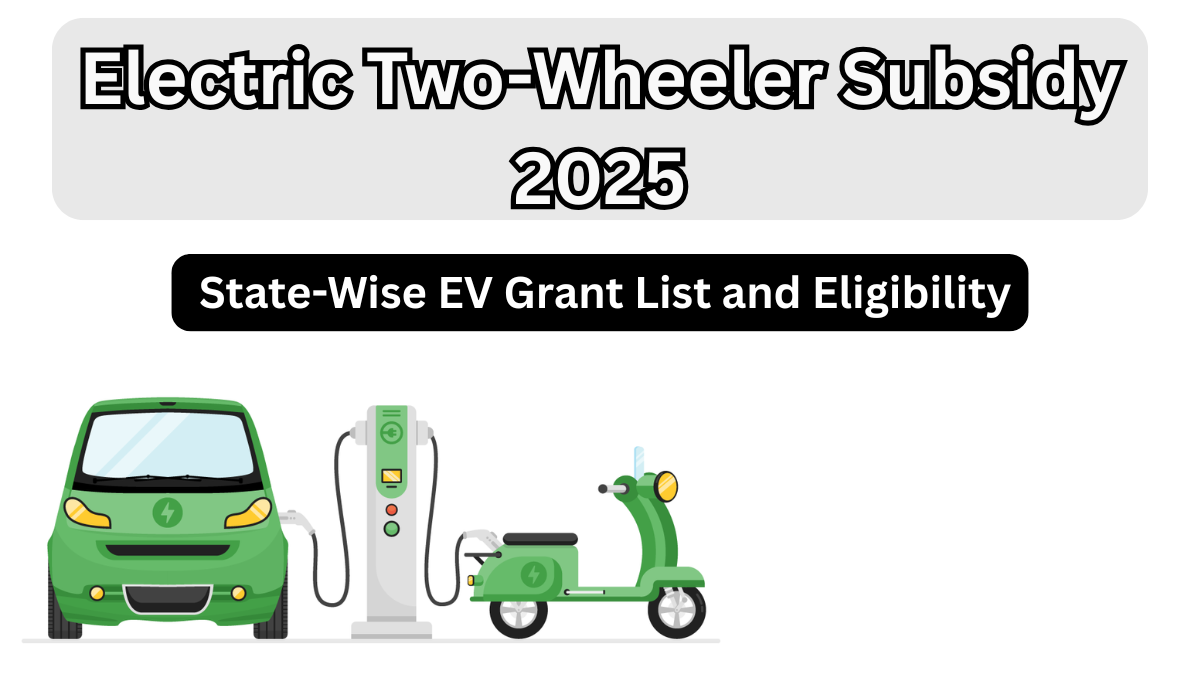As India shifts toward cleaner mobility, electric two-wheelers are becoming the preferred choice for many daily commuters. To make them more affordable, both the central and state governments are offering attractive incentives through electric two-wheelers subsidy schemes. These subsidies reduce upfront costs, making eco-friendly transport a reality for more households.
In 2025, several states have revised their state-wise EV grant 2025 policies, offering cash incentives, tax exemptions, and additional benefits.

Why Subsidies Matter for EV Adoption
Switching from petrol to electric two-wheelers isn’t just about saving fuel costs—it’s about contributing to a sustainable future. Subsidies:
-
Lower the initial purchase price of EVs
-
Encourage wider adoption across rural and urban markets
-
Reduce dependency on fossil fuels
-
Support India’s mission toward a greener economy
Central Government EV Subsidy (FAME-II)
The FAME-II scheme (Faster Adoption and Manufacturing of Hybrid and Electric Vehicles) remains the backbone of India’s EV policy.
-
Incentive: Up to ₹15,000 per kWh of battery capacity
-
Maximum support: 40% of the vehicle’s cost
-
Applies to: Registered electric two-wheelers meeting eligibility norms
State-Wise EV Grant 2025 – Complete List
Here’s a simplified table showing state-wise EV grant 2025 details for electric two-wheelers.
| State | Subsidy Amount (2025) | Additional Benefits |
|---|---|---|
| Delhi | ₹5,000 per kWh, up to ₹30,000 | Road tax & registration fee waived |
| Maharashtra | ₹5,000 per kWh, max ₹25,000 | Early-bird incentive up to ₹10,000 |
| Gujarat | ₹10,000 per kWh, up to ₹20,000 | No registration fees |
| Karnataka | ₹5,000 per kWh, up to ₹15,000 | Road tax exemption |
| Tamil Nadu | ₹5,000 per kWh, up to ₹20,000 | 100% exemption on registration fees |
| Rajasthan | ₹2,500 per kWh, up to ₹10,000 | Road tax exemption |
| Assam | ₹10,000 per kWh, up to ₹20,000 | Registration fee waiver |
| Telangana | ₹5,000 per kWh, up to ₹15,000 | No road tax on EVs |
| Kerala | ₹10,000 per kWh, up to ₹25,000 | Interest-free loans for EV buyers |
Eligibility for Electric Two-Wheelers Subsidy
To avail of these grants, EV buyers must meet specific eligibility criteria:
-
The two-wheeler must be purchased from an authorized dealer
-
Vehicle should meet speed and range requirements as per state EV policies
-
Registration under the state’s EV policy is mandatory
-
Battery type: Lithium-ion or advanced batteries (lead-acid batteries excluded)
How to Apply for the Subsidy
Getting the subsidy is simple, but varies from state to state. Generally, the process involves:
-
Buying an eligible EV from an approved dealer
-
Dealer deducts subsidy upfront from the invoice
-
Subsidy amount is later reimbursed by the government to the dealer
-
In some states, buyers need to register on official EV portals
Key Takeaways
-
The electric two-wheelers subsidy in 2025 significantly reduces EV costs.
-
Both central (FAME-II) and state-level incentives are available.
-
The state-wise EV grant 2025 ensures region-specific support to boost adoption.
-
Buyers should always check the latest notifications from their state government.
FAQs
Q1. What is the maximum subsidy available for electric two-wheelers in 2025?
The maximum subsidy varies by state, but under FAME-II, buyers can get up to 40% of the vehicle’s price subsidized. States like Delhi and Maharashtra also provide additional benefits.
Q2. Can I get both central and state subsidies together?
Yes, most states allow combining FAME-II benefits with their local EV incentives, giving buyers double savings.
Q3. Do all electric scooters qualify for subsidy?
No. Only models that meet speed, battery, and range criteria under FAME-II and state EV policies are eligible. Always confirm before purchase.
Q4. How can I check if my state is offering subsidies in 2025?
You can visit your state transport department’s official website or the national EV portal to see the latest state-wise EV grant 2025 updates.
Click here to learn more
